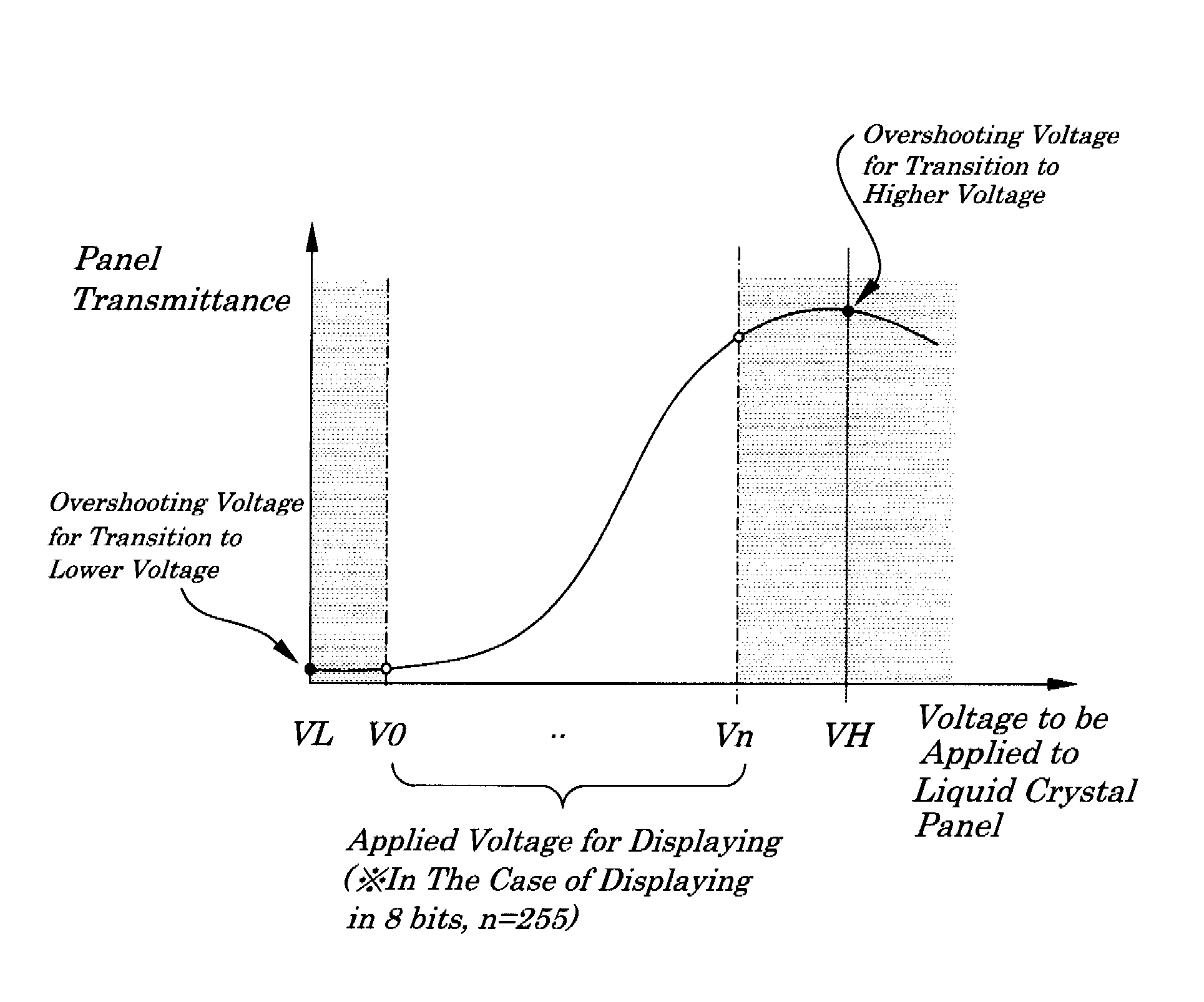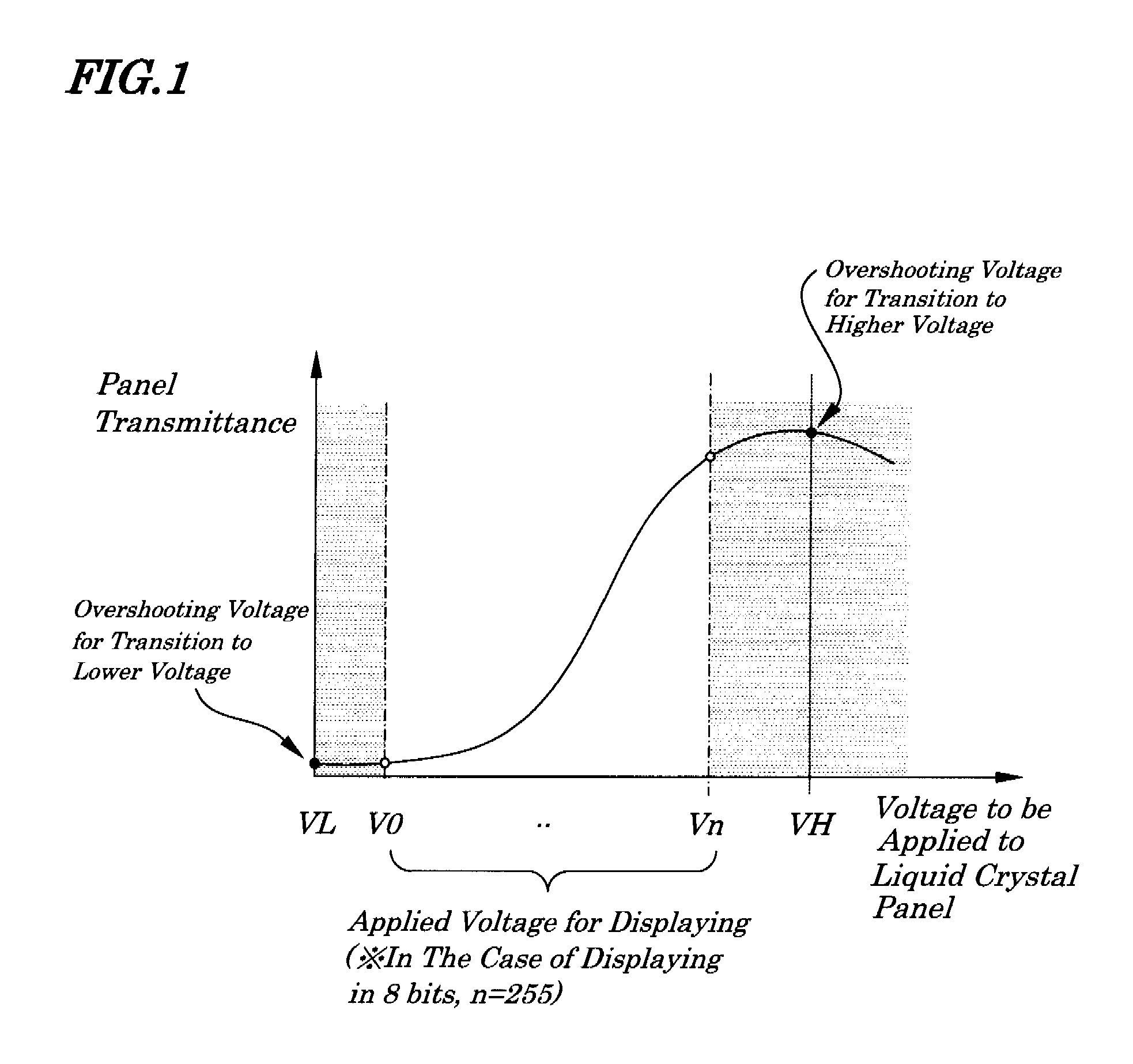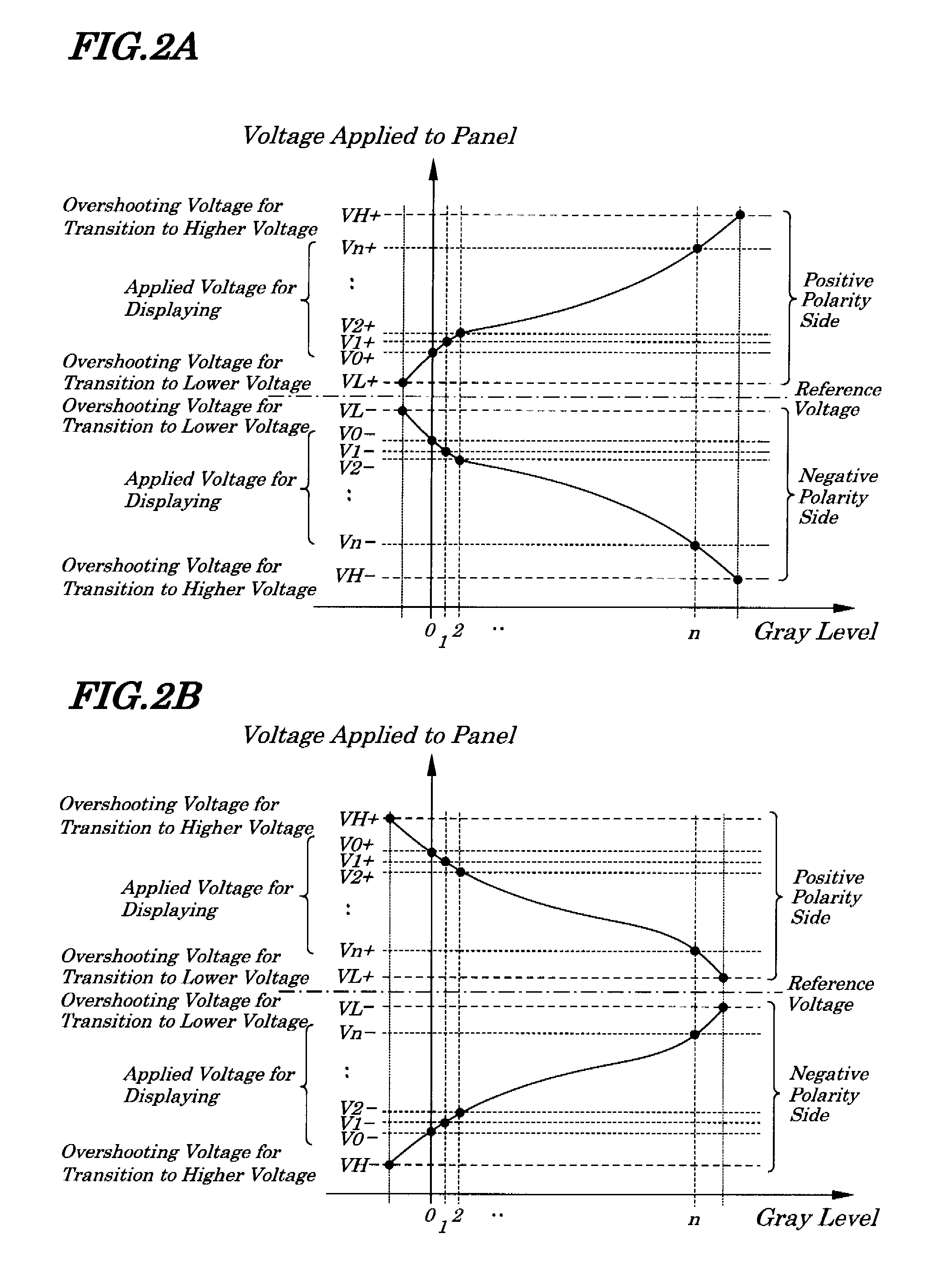Liquid crystal driving device
a driving device and liquid crystal technology, applied in the direction of electric digital data processing, instruments, computing, etc., can solve the problems of image exit, remaining and incomplete change in the voltage to be applied to the liquid crystal panel. achieve the effect of lowering the luminan
- Summary
- Abstract
- Description
- Claims
- Application Information
AI Technical Summary
Benefits of technology
Problems solved by technology
Method used
Image
Examples
first embodiment
[0083]FIG. 1 is a diagram showing a method for driving a liquid crystal of a first embodiment of the present invention. FIGS. 2A and 2B are diagrams showing a relation between voltages applied to a liquid crystal panel and display gray level of the first embodiment. FIG. 3 is a diagram showing, as an example, a state of changes in voltages applied to a liquid crystal panel during a transition of gray level when voltages for displaying are different from one another in the method of driving the liquid crystal of the embodiment. FIG. 4 is a diagram explaining a relation between a gray-level value setting voltage and a source driver output voltage of the embodiment.
[0084]In the liquid crystal driving method, as shown in FIG. 1, in addition to voltages for displaying V0, . . . , Vn, as a voltage to be applied to a liquid crystal panel, an overshooting voltage VH for transition to a higher voltage is set in a voltage range being higher than a limit voltage Vn of the voltages for displayi...
second embodiment
[0095]FIG. 5 is a diagram showing a method for driving a liquid crystal panel according to the second embodiment of the present invention. In the method for driving a liquid crystal panel according to the second embodiment, as shown in FIG. 5, as a voltage to be applied to a liquid crystal panel, in addition to voltages for displaying V0, . . . , Vn, a voltage for overshooting driving for transition to a higher voltage is set in only the range of voltages being higher than an upper limit Vn in the range of the voltages for displaying and, when the voltage to be applied to the liquid crystal panel is changed to the maximum value Vn of the applied voltage for displaying, an overshooting driving operation using the voltage VH is performed. On the other hand, for example, the voltage V0−1 is used for displaying which is the lower limit of the applied displaying voltage and by which a displaying range is made narrow and an overshooting driving operation is performed by using the voltage ...
third embodiment
[0097]FIG. 6 is a diagram showing a method for driving a liquid crystal panel according to the third embodiment of the present invention. In the method for driving a liquid crystal panel according to the third embodiment, as shown in FIG. 6, as a voltage to be applied to a liquid crystal panel, in addition to voltages for displaying V0, . . . , Vn, a voltage VL for overshooting driving for transition to a lower voltage is set in only the range of voltages being higher than a lower limit V0 in the range of the voltages for displaying and, when the voltage to be applied to the liquid crystal panel is changed to the minimum value V0 of the applied displaying voltage, an overshooting driving operation using the voltage VL is performed. On the other hand, for example, the voltage Vn−1 is used for displaying which is an upper limit of the voltages for displaying and by which a displaying range is made narrow and an overshooting driving operation is performed by using the voltage Vn as the...
PUM
 Login to View More
Login to View More Abstract
Description
Claims
Application Information
 Login to View More
Login to View More - R&D
- Intellectual Property
- Life Sciences
- Materials
- Tech Scout
- Unparalleled Data Quality
- Higher Quality Content
- 60% Fewer Hallucinations
Browse by: Latest US Patents, China's latest patents, Technical Efficacy Thesaurus, Application Domain, Technology Topic, Popular Technical Reports.
© 2025 PatSnap. All rights reserved.Legal|Privacy policy|Modern Slavery Act Transparency Statement|Sitemap|About US| Contact US: help@patsnap.com



